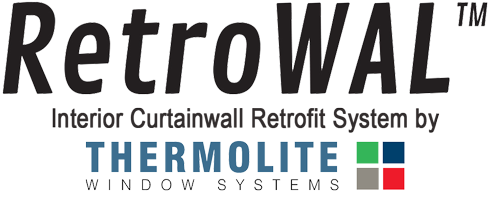What Is a Deep Energy Retrofit?
A deep energy retrofit is a whole-building analysis and construction process that achieves energy savings reductions of 50%. While “light” energy retrofits focus only on one or two energy conservation measures, such as upgrading lighting equipment and adding new motors to the heating and cooling systems, deep energy retrofits take a more integrated approach to leverage all viable energy savings opportunities in a building’s lifecycle.
A deep energy retrofit considers all the major capital needed in the building over the next several years, then evaluates the potential to meet all business-as-usual objectives in addition to capturing other benefits such as managing utility costs, attracting and retaining desired employees and tenants, improving reputation and leadership, and complying with present and future sustainability reporting requirements. Upgrades can occur all at once or be phased over several years, depending on your budget or financing mechanism.
Benefits of Successful Deep Energy Retrofits
- Owners | Reduce operating costs and improve public relations
- Investors | Increase market performance for a better yield
- Landlords | Attract and retain desired tenants; increase rent and decrease vacancy
- Tenants | Improve comfort for tenants
- Community | Improve economy with more jobs, reduce carbon emissions and create more available energy for growth
The 6 Main Effective Energy Conservation Measure (ECM) Categories:
- Lighting – Switching to energy efficient lighting is one of the fastest ways to cut energy bills. By replacing the light fixtures and bulbs in your building with models that have earned the ENERGY STAR, you can generate the same amount of light with less energy.
- Building Envelope – The building envelope forms the primary thermal barrier between the interior and exterior environments. With envelope technologies accounting for approximately 30% of the energy consumed in commercial buildings, it plays a key role in how much energy is required to heat and cool a building.
- HVAC – HVAC equipment is the single largest energy consumer in buildings. Increasing HVAC efficiency by adding or replacing parts can reduce annual energy use by up to 30%. Furthermore, implementing other ECMs can help reduce the peak load of HVAC equipment and lower the cost of equipment upgrades.
- Automated Controls – Installing automated controls such as motion lighting and smart thermostats help control the amount of energy your building consumes without impacting tenants.
- Renewable Energy – Switching to energy produced from sources that do not deplete or can be replenished within a human’s life time is certainly environmentally friendly, although it’s very expensive.
- Water Conservation – Implementing water conservation measures reduce the volume of water pumped (from groundwater or surface water sources), treated, and distributed throughout a building, saving energy at each of those steps.
Windows: a Key Component to a Building Envelope
Windows are often called the “energy holes” of a building because more energy is lost through a facility’s windows than any other area. Although modern glass technology is energy efficient, many buildings that were constructed before 1980 still feature the original single-pane glass. These windows are notoriously inefficient in terms of air infiltration and solar heat gain, and end up costing building owners a fortune in wasted energy.
It is very expensive and difficult to achieve a 50% energy savings reduction without improving single-pane glazing in buildings. Thermolite interior windows are specifically designed to address this problem at a fraction of the cost of traditional replacement windows. Thermolite windows install quickly and easily on the interior of a building’s existing windows, creating an insulating dead air space. The existing glass stays in place, eliminating the costly need for scaffolding or intrusive downtime.
Retrofitting single pane windows with high performing secondary glazing is a one-time, cost effective ECM that instantly reduces a building’s annual energy consumption. Once installed, there are no maintenance costs. The windows continue to “work” at reducing energy loss around the clock. In doing so, other ECMs such as HVAC upgrades become even more effective.
The Growing Demand for Deep Energy Retrofits in Major Cities
New York City Mayor Bill DeBlasio made national headlines recently when he suggested that the largest city in the U.S. will ban glass facades in new construction. Stressing the city’s goal to achieve a 40% reduction in GHG emissions by 2030, DeBlasio warned that owners of current glass facade buildings in NYC will face steep fines if they fail to improve their energy performance through deep energy retrofits. DeBlasio’s push to address low-performing glass is part of the City’s Green New Deal – a 9 volume plan to attack global warming on all fronts, comprised of $14 billion in new and committed investments, legislation and concrete action at the City level.
NYC isn’t the only major U.S. city taking steps toward achieving 100% renewable energy. In February 2019, Chicago Mayor Rahm Emanuel announced the city’s goal to become carbon neutral by 2035. In doing so, Chicago joined the list of 100 Resilient Cities, an organization dedicated to helping cities become more resilient to physical, social and economic challenges.
In Washington, D.C., the federal government has been encouraging energy improvements in buildings through the use of energy savings performance contracts, which retrofit buildings for guaranteed greater energy performance at no net cost to taxpayers. Thermolite has worked with numerous Energy Service Companies (ESCOs) to help GSA buildings achieve a 50% reduction in energy savings through deep energy retrofits, such as the New Carrolton Federal Building in Maryland.
All indicators suggest that the movement toward energy efficiency in the public and private building sector will continue to grow. For older buildings with single pane windows, achieving a 50% reduction in energy savings through a deep energy retrofit is highly achievable by improving the building envelope with secondary glazing, upgrading the lighting and implementing other cost-effective ECMs.
To learn more about deep energy retrofits, contact Thermolite today.



